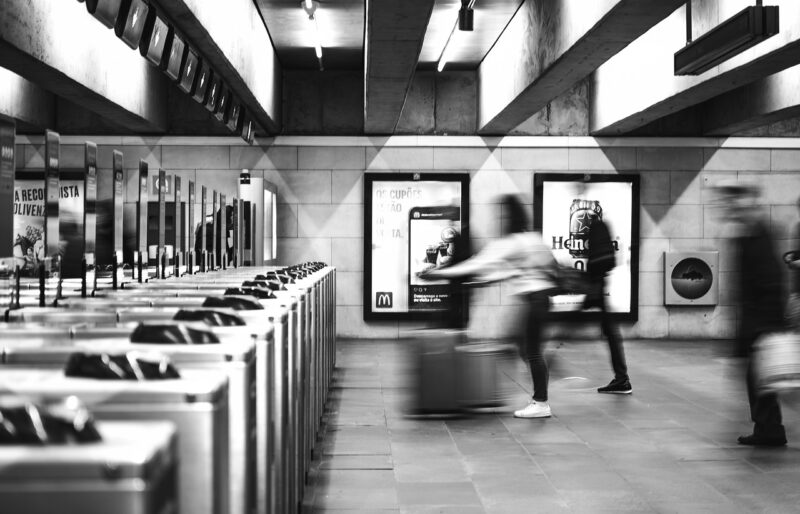Why Subways Are Designed the Way They Are: A Deep Dive into Transit Systems
November 11, 2024

Subway systems are marvels of engineering and city planning, designed not only for efficiency but also to meet the complex needs of urban populations. With millions of riders daily in major cities around the globe, the design of a subway system can greatly impact both the overall transit experience of its users and the broader environment around it.
1. Historical Context of Subway Systems
The story of subways dates back to the early 19th century when the first underground railway opened in London in 1863. Initially conceived to alleviate traffic congestion on city streets, subways quickly evolved into essential arteries for public transportation.
As cities expanded and populations grew, the need for efficient transit became more pronounced. Cities like New York, Paris, and Tokyo emerged as leaders in subway development, each introducing innovative features that responded to local demands and challenges. In New York City, for instance, the intricate design reflects a combination of factors, including topography, existing infrastructure, and the city’s growth phases.
2. Design Principles of Subway Systems
Designing a subway system involves numerous considerations that ensure functionality, safety, and aesthetic appeal. Here are key design principles that shape subway systems:
- 1. Efficiency and Accessibility: The layout of subway lines prioritizes accessibility to key urban areas such as business districts, residential neighborhoods, and cultural landmarks. Designers frequently use data analysis to determine the optimal routes that will serve the highest number of passengers efficiently.
- 2. Safety Measures: Safety is paramount in subway design. Measures include emergency evacuation protocols, surveillance systems, and structural integrity checks to withstand natural disasters such as earthquakes and flooding. Platforms are typically equipped with safety barriers and other features to minimize accidents.
- 3. User Experience: Enhancing the rider’s experience involves designing spacious stations, intuitive signage, and a seamless transfer between lines. Subway design often incorporates elements such as art installations and comfortable waiting areas to improve the overall ambiance of the stations.
3. Technological Innovations in Subway Design
Advancements in technology have transformed how subway systems are created and operated. Here are examples of modern innovations that have improved subway designs:
- Automated Train Operations: Many modern subway systems employ automated trains that reduce wait times and increase safety. Automation allows for precise scheduling and faster response times during emergencies or disruptions.
- Smart Ticketing Solutions: Contactless payment systems, mobile ticketing apps, and smart cards streamline the boarding process, enhancing user convenience and reducing operational costs.
- Real-Time Data Integration: Digital displays provide real-time updates on train arrivals, delays, and route changes, allowing passengers to make informed decisions and enhancing the overall transit experience.
4. Environmental Considerations in Subway Design
As cities aim to reduce their carbon footprints, many subway systems have incorporated sustainable practices into their design.
These practices include:
- Use of Renewable Energy Sources: Some cities are exploring solar panels installed on station roofs or incorporating wind turbines to power subway operations partly, reducing reliance on non-renewable energy.
- Green Infrastructure: Rainwater collection systems and green roofs help manage stormwater runoff in urban areas, contributing to ecological sustainability.
- Preservation of Green Spaces: Incorporating parks and green areas around subway stations enhances urban biodiversity and provides much-needed recreational spaces in densely populated cities.
5. Challenges in Subway Design and Operation
Despite their numerous advantages, subway systems face significant challenges:
- Funding and Maintenance Issues: Securing funding for both the construction of new lines and the maintenance of existing infrastructure can prove difficult in many cities. Aging infrastructures may require extensive investment to ensure safety and reliability.
- Overcrowding: As urban populations grow, many subway systems experience overcrowding, particularly during rush hour. This necessitates ongoing planning to expand capacity and improve services.
- Political and Social Resistance: New subway projects can face opposition due to concerns about displacement, construction noise, and changes to existing neighborhoods. Successful engagement and communication with local communities are vital to overcoming these hurdles.
6. The Future of Subway Systems
As cities continue to evolve, subway systems will likely play an increasingly important role in sustainable urban transit. The future may include:
- Expansion of Networks: Cities will need to expand existing subway networks to meet growing demands and ensure connections to urban outskirts and suburban areas.
- Integration with Other Modes of Transit: Future designs may better integrate subways with buses, trams, and bike-sharing programs to create cohesive, multi-modal transit systems.
- Emphasis on User-Centric Design: Continuous feedback from users can drive enhancements in service quality, design, and technology, ensuring that subway systems remain relevant and user-friendly in changing urban landscapes.
Conclusion
Subway systems are complex networks tailored to the specific needs of the urban environment they inhabit. Understanding why subways are designed the way they are provides valuable insight into the inner workings of city life and the myriad factors that influence public transportation systems.
As urban areas continue to grow, the importance of efficient, safe, and sustainable transit solutions becomes paramount. By leveraging new technologies, integrating best practices, and engaging communities in the design process, subway systems can evolve to meet the demands of future cities, ensuring they remain vital conduits for urban mobility and accessibility.





